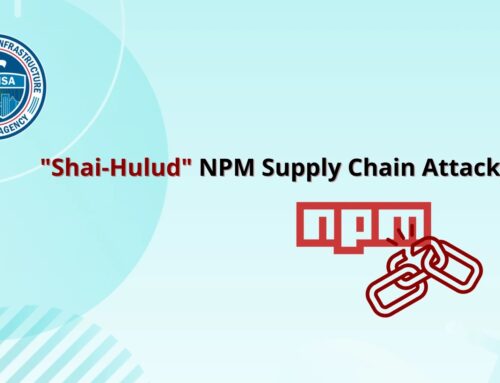
Nimbus Manticore Attacking Defense and Telecom Sectors With New Malware
Unmasking Nimbus Manticore: A Deep Dive into New Malware Campaigns Targeting Critical Sectors
The digital battleground is constantly shifting, with sophisticated threat actors continually refining their arsenals. Among these, the Iranian state-sponsored group known as Nimbus Manticore has emerged as a formidable and evolving threat. Also tracked by researchers as UNC1549 and Smoke Sandstorm, this advanced persistent threat (APT) group has significantly escalated its operations, deploying novel malware variants to target critical defense manufacturing, telecommunications, and aviation sectors across Western Europe. This blog post unpacks the latest developments in Nimbus Manticore’s campaigns, detailing their evolving tactics and offering crucial insights for cybersecurity professionals.
Who is Nimbus Manticore? Understanding the Adversary
Nimbus Manticore is not a new player in the cybersecurity landscape. Recognized as a mature APT group with strong ties to Iranian state interests, their objectives typically align with espionage, data exfiltration, and disruption of critical infrastructure. Their historical operations have demonstrated a methodical approach, focusing on high-value targets within strategic industries. The recent surge in activity, however, signals a concerning evolution in their capabilities and a renewed focus on sectors vital to national security and economic stability.
New Malware Variants and Evasive Techniques
The core of Nimbus Manticore’s intensified campaign lies in its deployment of sophisticated, previously undocumented malware variants. While specific names and technical details of these new tools are still under analysis, the reported characteristics point to a significant focus on evasion and persistence. This includes:
- Advanced obfuscation techniques: Designed to bypass traditional signature-based detection mechanisms.
- Stealthy communication channels: Utilizing a variety of methods to blend in with legitimate network traffic, making command and control (C2) difficult to identify.
- Sophisticated persistence mechanisms: Ensuring continued access to compromised systems even after reboots or security cleanups.
These advanced capabilities allow Nimbus Manticore to maintain a low profile while conducting intricate espionage operations within highly secured environments. The targeting of defense manufacturing, telecommunications, and aviation strongly suggests an interest in intellectual property, strategic intelligence, and potentially, disruption capabilities.
Targeted Sectors: Why Defense, Telecom, and Aviation?
The selection of defense manufacturing, telecommunications, and aviation sectors is highly deliberate and reflects strategic objectives common to state-sponsored APT groups.
- Defense Manufacturing: Provides access to sensitive research and development, intellectual property related to military hardware and technologies, and strategic planning documents.
- Telecommunications: Offers control or eavesdropping capabilities over vast communication networks, enabling surveillance, data exfiltration, and potential disruption of services.
- Aviation: Could provide insights into logistics, flight plans, critical infrastructure controls, and supply chain vulnerabilities.
Compromises in these sectors can have far-reaching implications, impacting national security, economic competitiveness, and public safety. Organizations within these industries must recognize themselves as prime targets and elevate their defensive postures accordingly.
Remediation Actions and Proactive Defense Strategies
Given the advanced nature of Nimbus Manticore’s tactics, a multi-layered and proactive cybersecurity strategy is paramount for affected and at-risk organizations.
- Implement Advanced Endpoint Detection and Response (EDR) solutions: EDR platforms can detect and respond to emergent threats that bypass traditional antivirus.
- Enhance Network Intrusion Detection/Prevention Systems (NIDS/NIPS): Deploy and tune these systems to identify anomalous traffic patterns indicative of C2 communication or data exfiltration.
- Conduct Regular Vulnerability Assessments and Penetration Testing: Proactively identify and remediate weaknesses in your infrastructure. While Nimbus Manticore’s new malware isn’t linked to a specific CVE, ensuring a hardened environment reduces overall attack surface.
- Strengthen Identity and Access Management (IAM): Enforce strong passwords, multi-factor authentication (MFA) for all critical systems, and the principle of least privilege.
- Develop a Robust Incident Response Plan: Ensure your team is prepared to quickly detect, contain, eradicate, and recover from a sophisticated attack.
- Employee Security Awareness Training: Educate staff on the latest phishing tactics, social engineering techniques, and the importance of reporting suspicious activities.
- Threat Intelligence Sharing: Actively participate in threat intelligence communities to stay informed about the latest TTPs (Tactics, Techniques, and Procedures) used by groups like Nimbus Manticore.
- Segment Networks: Isolate critical systems and sensitive data from less secure parts of the network to limit lateral movement in case of a breach.
Key Takeaways for Cybersecurity Professionals
The resurgence and evolution of Nimbus Manticore highlight a critical message for the cybersecurity community: the threat landscape is dynamic and requires continuous adaptation. Organizations operating in defense manufacturing, telecommunications, and aviation sectors, particularly in Western Europe, must assume they are under constant threat. Proactive defense, robust detection capabilities, and a well-drilled incident response plan are not merely best practices; they are essential for resilience against sophisticated adversaries like Nimbus Manticore. Stay vigilant, stay informed, and fortify your defenses.





